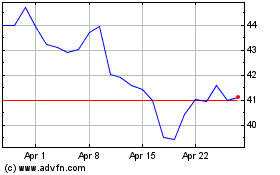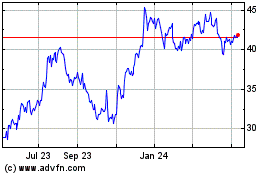Stock Market News for March 12, 2012 - Market News
March 12 2012 - 5:06AM
Zacks
Markets ended modestly higher on
Friday buoyed by positive data on the jobs market. On the third
anniversary of the stocks’ lowest point during the Great recession,
investors drew optimism from reports of an improving economy.
However, benchmarks came down from morning highs as a concerns over
“credit event” in Greece somewhat weighed on sentiments. Alongside,
the week saw the benchmarks’ worst fall of 2012, but that did not
stop the majority of benchmarks from closing in the green.
The Dow Jones Industrial Average
(DJI) ended 0.1% higher at 12,922.02. The Standard & Poor 500
(S&P 500) moved up to 1,370.87, registering gains of 0.4%. The
tech-laden Nasdaq Composite Index jumped 0.6% and finished Friday’s
trading session at 2,988.34. The fear-gauge CBOE Volatility Index
(VIX) lost 4.7% and settled at 17.11. On a year-over-year basis,
VIX has now declined significantly, by 26.9% and is gradually
reaching its lowest level since July 2011. The advancers were way
ahead of the decliners on the New York Stock Exchange, as for 67%
of the advancers, 29% stocks were on the declining side. The
remaining 4% of stocks were left unchanged. Total volume on the
NYSE was 3.64 billion shares.
The week had opened with
apprehensions surrounding the Greek bond-swap deal. European
concerns also dragged the benchmarks to their biggest fall for this
year on Tuesday. However, since Wednesday things turned around
following encouraging jobs data from ADP. Also buoying the markets
on Thursday was news that a large number of investors had agreed to
participate in the bond-swap plan. The positive mood continued into
Friday, as nonfarm payroll data suggested an improving economy. The
Dow edged down 0.4% for the week, but that is still a great
improvement after the blue-chip index slumped over 200 points on
Tuesday. The S&P 500 and Nasdaq closed 0.1% and 0.4% higher for
the week, registering their fourth-straight week of gains.
On Friday, investors drew optimism
from what the U.S. Bureau of Labor Statistics had to share. Nonfarm
payroll employment was reported to have increased by 227,000 in
February, while the unemployment rate remained flat at 8.3%. The
increase in jobs was also more-than-expected as consensus estimates
had predicted gains of 211,000. The report also stated: “Both the
labor force and employment rose in February. The civilian labor
force participation rate, at 63.9 percent, and the
employment-population ratio, at 58.6 percent, edged up over the
month”.
Improving jobs data provided a
boost to stocks and nine of the 10 industry groups in the S&P
500 finished in the green. Among them, financials and consumers
enjoyed most of the gains. The Financial SPDR Select Sector Fund
(XLF) gained 0.8% and the Consumer SPDR Select Sector Fund (XLY)
was up 0.6%. As for the financial bellwethers, American Express
Company (NYSE:AXP), Citigroup, Inc. (NYSE:C), JP Morgan Chase &
Co. (NYSE:JPM), Morgan Stanley (NYSE:MS), Wells Fargo & Company
(NYSE:WFC), U.S. Bancorp (NYSE:USB) gained 0.5%, 0.6%, 1.5%, 1.1%,
0.8% and 1.9%, respectively. Coming to consumer stocks, Macy's Inc
(NYSE:M), Target Corporation (NYSE:TGT), Wal-Mart Stores, Inc.
(NYSE:WMT) and Lowe's Companies, Inc. (NYSE:LOW) gained 0.9%, 0.8%,
0.5% and 1.4%, respectively.
However, markets lost some points
at a later stage as concerns from Greece somewhat bogged down
sentiment. The odds of Greece avoiding a debt default had
definitely improved through the week. The nation has convinced a
large number of creditors to shoulder its debt burden and
reportedly 75% of investors were in favor of the deal, while a CNBC
report quoted a Greek official stating that ‘voluntary take-up of
the offer’ escalated to roughly 95%. However, along with the
improving odds also came the concerns about a “credit event”, which
spooked investors and benchmarks lost some shine at the later
hours. The International Swaps and Derivatives Association reported
that a "credit event" enables creditors to claim insurance for
their credit-default swaps. Thus, investors were worried that the
financial houses may have to pay the insurance amount, leading to a
selling pressure on the markets.
AMER EXPRESS CO (AXP): Free Stock Analysis Report
CITIGROUP INC (C): Free Stock Analysis Report
JPMORGAN CHASE (JPM): Free Stock Analysis Report
LOWES COS (LOW): Free Stock Analysis Report
MACYS INC (M): Free Stock Analysis Report
MORGAN STANLEY (MS): Free Stock Analysis Report
TARGET CORP (TGT): Free Stock Analysis Report
US BANCORP (USB): Free Stock Analysis Report
WELLS FARGO-NEW (WFC): Free Stock Analysis Report
WAL-MART STORES (WMT): Free Stock Analysis Report
To read this article on Zacks.com click here.
Zacks Investment Research
US Bancorp (NYSE:USB)
Historical Stock Chart
From Apr 2024 to May 2024

US Bancorp (NYSE:USB)
Historical Stock Chart
From May 2023 to May 2024
